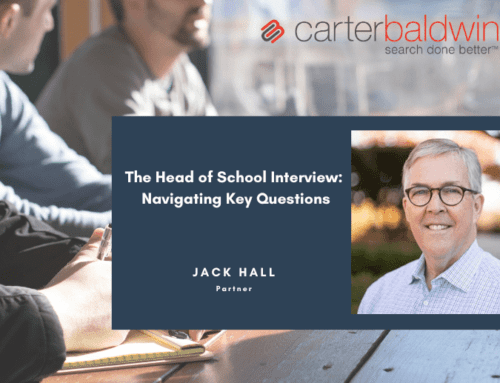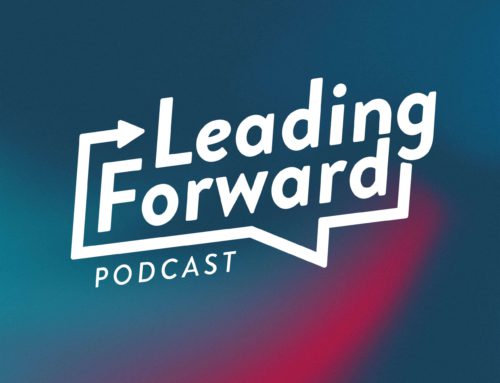While we certainly can’t dictate every outcome, we can align our teams and resources to maximize our chances of success. Said another way, the championship is not always won in the draft, but I like my odds better when I’ve got a team comprised of the right athletes. A crucial question I focus on when assessing an executive candidate is whether they are in the right place on the “zone of pressure/zone of contentment” continuum.
The zone of pressure/zone of contentment continuum is not about intellectual capacity, functional alignment or overall “quality.” It’s not about “A” and “B” players. The framework creates focus on an executive’s aspirational alignment with the results required from a role. It’s about creating fit with what the company and the executive both “want.” Getting this right increases the likelihood that the end game results are achieved for all parties. It’s absolutely crucial when placing a partner or market facing professional where there is a premium on growth.
Let’s take a look at the extreme ends of this continuum …
Zone of pressure people have an internal drive &/or restlessness that fuels their professional behavior, creating forward momentum for the businesses they are involved in. To borrow an often-used term, they are “change agents.” Robert Woodruff, the former President of the Coca-Cola Company pointed to this principle by stating “the world belongs to the discontented.” Discontent need not imply the individual be in a negative situation … only that, professionally, they are driving for more. The underlying drivers could be money, competitiveness, affirmation, commitment to a vision or even having something to prove (to themselves or others). In its most extreme form, zone of pressure people will bear any burden to achieve professional success. In athletic terms, zone of pressure people “leave it all on the field.” In military terms, they “go around, over or through.” Whatever the underlying motivation, the status quo is just a milemarker along the way for a zone of pressure person.
On the flip side, zone of contentment people seek business environments that allow them to keep their professional bandwidth at a limited level. Most often, the currency for a zone of contentment person is time, but it can also be intellectual margin or low stress. Zone of contentment people have clear boundaries on the time & energy they devote to work because they have achieved their professional/financial goals or have non-negotiable non-work priorities. In the workplace, zone of contentment folks can certainly push the envelope and be all-in, but typically won’t sustain this behavior. They may be highly qualified, “A” players, but they have a governor on the amount of work focused effort and bandwidth they will outlay.
As this is a continuum, it is key to note that zone of pressure people are not necessarily 100% professionally motivated and willing to sacrifice everything for professional or financial gain. Nor are zone of contentment people professionally unmotivated and don’t care about work. To be useful, these concepts need to be considered relative to an organizational need and the skills/experience of a given executive. For example, I have seen very effective CEO’s with large, important jobs that live in the zone of contentment and perform well. Often these individuals have mastered their role and can lead with decreasing levels of bandwidth applied to their position. Could they step to the next bigger role? Sure. They choose not to because of the cost in bandwidth required from other areas of their lives.
A close friend is a senior officer in a mid-sized bank. He leads a significant P&L in their debt portfolio and is a key member of the management team. He is bright and has high professional horsepower. The major Wall Street banks have been after him for years, offering bigger roles and more income. He knows full well that this would come with a price tag of decreased time and emotional availability for family and non-work ventures. He’s staying put. He lives on the zone of contentment side of the continuum. Importantly, he is a high performer for the bank. Their wants and his wants are in harmony.
When selecting an executive, it is crucial to create alignment between the results required and the candidate’s position on the zone of pressure/zone of contentment continuum. If the organization will be happy with results lower than what the candidate needs to achieve their professional goals, then the executive can quickly outstrip the role, causing them to leave or putting pressure on the company to expand the individual’s footprint. This can be a real problem if there is limited upside in the enterprise. On the flip side, put a person whose professional contentment will be reached before the organizations will and you’ve got a likely performance gap. Misalignment here is a common cause of organizational friction or unmet expectations for both the company and the individual.
The CEO of one of my private equity backed clients always hires zone of pressure executives. It is a performance and cultural imperative in their self-described “blue flame” environment. A recent executive placement had to agree to stop pursuing a graduate degree because it was unnecessary for success in the role and required too much inflexibility in his calendar. Executives at my client have significant equity upside, but the price is being “all in – all the time.” Zone of pressure.
On a recent search for a senior partner for a “Big 4” client I had a candidate that looked perfect in many ways … bright, technically proficient and successful for his current firm. He liked his current, more junior role but wanted more. He checked lots of our boxes and said many of the right things. But digging hard into his financial and professional wants illuminated that he would be happy at a level lower than my client would. My client had a significant market opportunity that would yield a 7 figure income for the right practice leader. This candidate liked the idea of the role, upside and income, but his situation was such that he did not need nor sufficiently desire the rewards commensurate with my client’s results requirements. He wanted more, but was not enough in the zone of pressure for the role. The risk of his stalling out early was too high.
Achieving the alignment described here requires being very specific about the results (not just skills) needed from a given role. I ask my clients to articulate 6 month, 1 year and 3 year performance goals they expect from the candidate hired. It is surprising how often this is a challenging exercise as their focus is typically on skills. Expanding the discussion to results illuminates the barriers the new executive will need to overcome and the motivation they will need to win. Then, getting way underneath a candidate’s core desires is necessary. This requires more spade work and creativity and we say “no” to more candidates. But, the end result is a greater probability for short and long term success.





